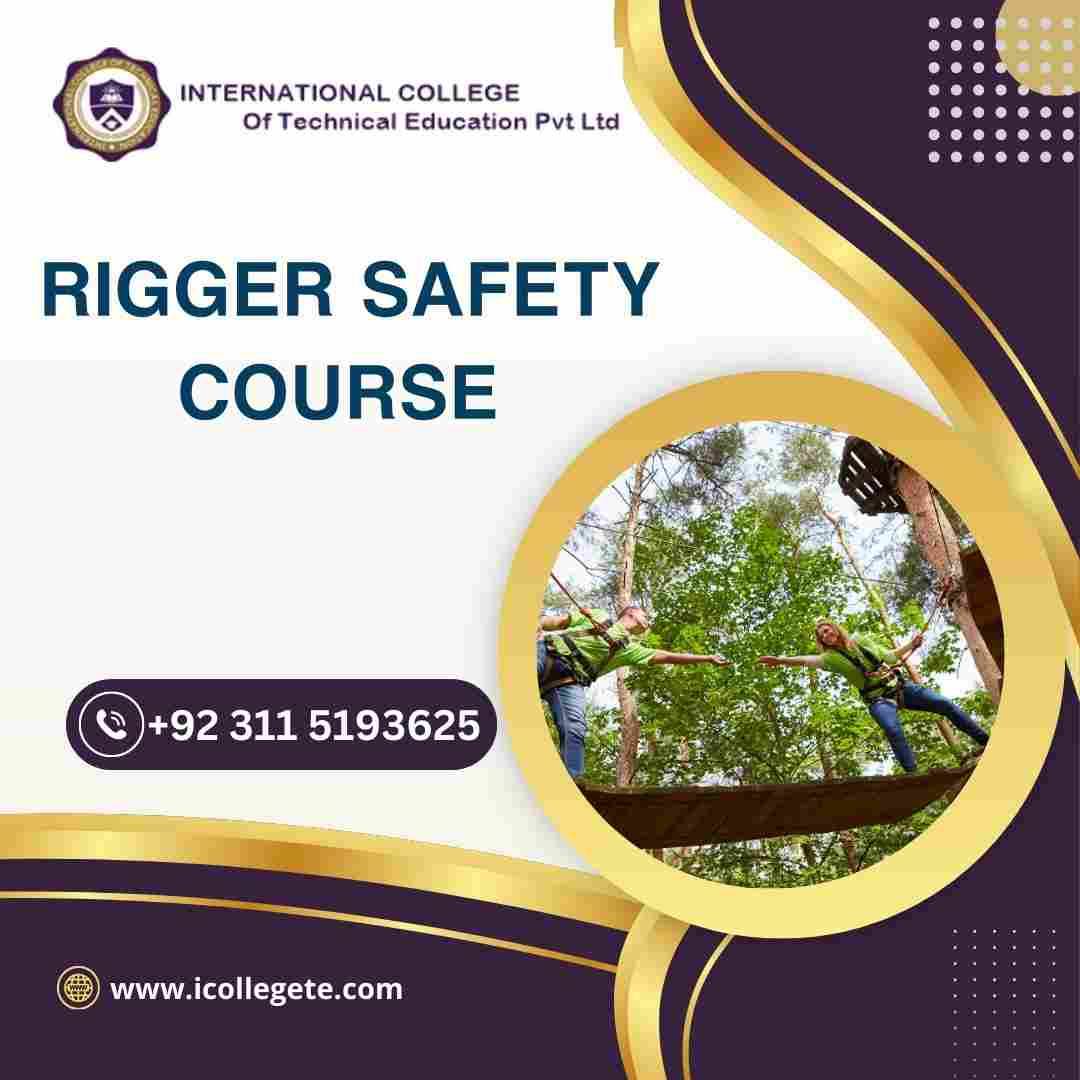The Rigger Safety Course is designed to provide participants with comprehensive knowledge and practical skills required for safe rigging operations. Rigging is a critical aspect of various industries such as construction, manufacturing, and entertainment, where heavy loads need to be lifted, moved, and secured. This course aims to equip participants with the necessary understanding of rigging equipment, techniques, regulations, and best practices to ensure the safety of personnel and assets during rigging operations.
Course Benefits:
- Gain a solid foundation in rigging safety principles and practices.
- Develop the skills to perform rigging operations safely and efficiently.
- Enhance career prospects by acquiring a valuable skill set sought after by various industries.
- Contribute to a safer work environment by reducing the risk of accidents during rigging.
- Understand relevant regulations and standards related to rigging safety.
- Increase confidence in planning and executing rigging tasks.
- Improve communication and teamwork skills, vital for coordinating complex rigging operations.
Course Learning Outcomes:
By the end of the course, participants will be able to:
- Explain the fundamental principles of rigging safety, including load calculations, center of gravity, and load stability.
- Identify and demonstrate the proper use and inspection of rigging equipment, such as slings, shackles, hooks, and hoists.
- Understand the different types of lifting equipment and select the appropriate equipment for various rigging tasks.
- Interpret relevant industry regulations and standards, ensuring compliance during rigging operations.
- Plan and execute rigging operations, considering factors such as load weight, load integrity, and environmental conditions.
- Apply safety procedures to prevent accidents, including hazard identification, risk assessment, and the use of personal protective equipment (PPE).
- Communicate effectively with team members during rigging operations, ensuring clear instructions and coordinated efforts.
- Troubleshoot common rigging issues and respond to emergencies with appropriate safety measures.
- Collaborate in a team to complete simulated rigging projects, demonstrating practical understanding and teamwork skills.
- Pass a comprehensive assessment to earn a certification in Rigger Safety.
Course Study Units:
Introduction to Rigger Safety
- Importance of rigging safety in various industries
- Historical incidents and lessons learned
- Overview of rigging equipment and terminologies
Rigging Regulations and Standards
- OSHA regulations and guidelines
- Industry-specific standards (ASME, ANSI, etc.)
- Compliance and consequences of non-compliance
Rigging Equipment and Inspection
- Types of rigging equipment (slings, shackles, hooks, etc.)
- Proper use, maintenance, and storage of equipment
- Pre-use inspection and identification of defects
Load Calculations and Rigging Planning
- Load weight estimation and distribution
- Calculating load angles and center of gravity
- Creating a rigging plan considering factors like load integrity and environmental conditions
Lifting Equipment and Techniques
- Types of lifting equipment (hoists, cranes, forklifts, etc.)
- Safe operation of lifting equipment
- Rigging techniques for different types of loads
Hazard Identification and Risk Management
- Identifying potential hazards in rigging operations
- Conducting risk assessments and implementing control measures
- Emergency response planning and procedures
Communication and Teamwork in Rigging
- Effective communication during rigging operations
- Roles and responsibilities of team members
- Coordinating efforts for safe and efficient rigging
Practical Simulations and Hands-On Training
- Rigging scenarios and simulations
- Hands-on practice with rigging equipment
- Applying safety procedures in a controlled environment
Entry Requirements:
- Participants must be at least 18 years old.
- Basic understanding of workplace safety practices is recommended but not mandatory.
Future Progressions:
Upon completing the Rigger Safety Course, participants can consider the following progressions:
- Advanced Rigging Courses: Delve deeper into complex rigging techniques and scenarios.
- Safety Supervisor: Pursue roles overseeing rigging operations and ensuring compliance with safety standards.
- Specialized Industries: Apply rigging safety skills to specific industries like construction, entertainment, or maritime.
- Continuous Learning: Stay updated with evolving regulations and technologies in the field of rigging safety.
Conclusion:
the Rigger Safety Course equips participants with the knowledge and skills needed to execute rigging operations safely and effectively. By combining theoretical understanding with hands-on experience, participants are prepared to contribute to safer work environments and play vital roles in various industries.






